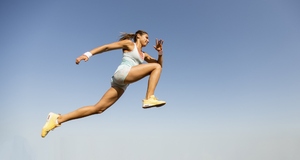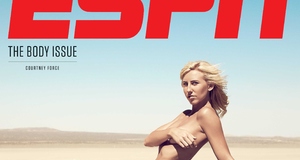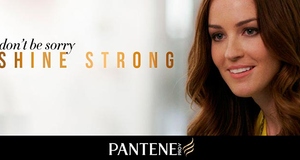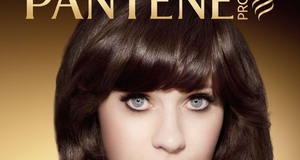From Elon Journal of Undergraduate Research in Communications VOL. 4 NO. 2Testing the Appeals of Feminist Ideologies in Female Athletic AdvertisingIV. FindingsLower-impact athletes: feminine focusIn responding to the ads, participants 3-6 said the third-wave ads – identified as "Thunder Thighs" and "Titles" throughout the focus group – appealed to them the most. Both ads had concepts based on female experiences, and for this reason, were ads to which these participants related because they could identify with the experiences communicated. Participant 3 noted that at first glance, the tagline in "Titles" looked as though it said, "Are you looking at my titties?" The actual tagline reads, "Are you looking at my titles?" but participant 3 liked the seemingly sly play on women's objectification and the shared experience. When you're walking down the street and you see people checking you out, you're like, "are they looking at my 'titties'? Are they looking at my ass?" That kind of thing. She responded most strongly to the challenge the ad's tagline posed because of its "sassiness" and how it took a commonly negative experience and thrust it back in the perpetrator's face, empowering the woman behind it. Participant 3 favored this ad because she found it the most relatable. She identified with the personality of the ad and the experience behind it. These people could be my friends. Participants 4, 5, and 6 shared similar justification when describing how and why they favored "Thunder Thighs." As with "Titles," "Thunder Thighs" acknowledged a familiar concept among females – "thunder thighs" – the term for thighs that are larger, thicker, and curvier than the ones seen on slender, model-like women. "Thunder Thigh's" use of the term and its portrayal of thunder thighs resonated with the participants because it appealed to something they understood. ["Thunder Thighs"] appeals to me most mainly because I do run and I know people that have stopped running because they started getting thunder thighs, so I understand that concept. I just like that it really related to me and kind of what I get out of working out. Generally, participants 3-6 responded most positively to "Thunder Thighs" because it appealed to their female values. The ["Thunder Thighs"] advertisement is probably the most feminine one because it appeals to what a woman would care about now and in the future. Participant 5 liked that "Thunder Thighs" recognized her values of family and body image, but appreciated that the ad still celebrate her being active and athletic. My favorite is ["Thunder Thighs"] . . . because it talks about having a grandchild – and that's more of appealing to the female – but then it talks about thunder thighs, so that would be more athletic. Higher-impact athletes: gender-neutralityIn contrast to the preferences of the lower-impact athletes, the higher-impact athletes did not connect with the femininity-focused, third-wave ads. Instead, they responded more to the gender-neutral, secondwave "Serena Williams" and "Make Yourself" and the equality-based messages they held. Participant 3, in weighing which ad she related to the most, recognized that "Serena Williams" did not give attention to any specifically female attributes, making it, in her opinion, the most symbolic of gender equality.
The text in it ["Make Yourself"], it's totally non-gender specific because it doesn't say, "ranked #140 because I'm a girl," it says, "ranked #140 because of all these traits" . . . and you could apply that to any athlete. Additionally, the higher-impact athletes did not feel the need for a stronger female focus to compel them. Participant 2 said she related more to "Serena Williams," but that its appeal did not span beyond anything more than gender. She also liked how the two ads' less feminine-focused approach made the women appear more equal. She identified with the fact that the ads did not give special focus to any female attributes but rather, gave the message that an athlete is an athlete, regardless of gender. I feel like if it's girls pictured, I can relate to it more being a female athlete, whereas, if it was just like, a guy tennis player flexing, I'd relate to it more just as being an athlete. So it depends on the sex of the person in the picture. In other words, the appeal of "Serena Williams" was not in the depiction of the woman or her role portrayal, but in the ad's presentation of a woman in general. Higher-impact athletes: performanceThroughout the discussion, the participants compared elements of each ad to their own associations with athleticism and their personal lifestyles. Based on what each participant mentioned, it was clear that there were differing values between the higher and the lower-impact athletes. The higher-impact athletes primarily valued performance and related most to "Serena Williams" and "Make Yourself" because they portrayed this value. It's not about how you look when you're working out. It's more your performance. I like ["Serena Williams" and "Make Yourself"], again, because these two women just look like the epitome of hard work, which for more, as an athlete, that's what athletics have always been about – always working hard to win something or not necessarily to get in shape, but to get somewhere. Lower-impact athletes: empowering copyParticipants 3-6 associated "Thunder Thighs" with the concept of empowerment because of the positive spin its copy put on thunder thighs. The participants saw the ad's copy as taking a generally negative concept and repositioning it as a positive thing. Thunder thighs are a potential cause for self-consciousness among women; "Thunder Thighs" is encouraging women to take ownership and pride in their bodies, which, the participants agreed, embodies their definitions of empowerment. I see empowerment as putting power back into something or taking something without power and adding power because something has been changed. It's saying, "actually, thunder thighs are powerful and strong and awesome." So I see that as being most empowering. Higher-impact athletes: dynamic visuals"Serena Williams" and "Make Yourself" appealed to participants 1 and 2 because of their intense images. Both participants were engaged by the visuals alone and gave little regard to the accompanying copy. There's more going on in both of those ["Serena Williams" and "Make Yourself"]. The more action in the picture really draws me to it ["Serena Williams"]. I would also agree and say that ["Serena Williams" and "Make Yourself"], I feel like I can relate to more. There is more action going on. Also of note here is that the higher-impact athletes likened the visuals in "Serena Williams" and "Make Yourself" to images they would find in male athletic ads. Participants 1 and 2 noted that the visual elements present in most male athletic ads were the same characteristics that appealed to them in these female ads. If I see male fitness ads . . . there's a lot of muscle, a lot of sweat, and I feel like in 1 and 4 that's kind of what would draw you in. Especially in ["Make Yourself"] – I mean, I don't think she has that much makeup on and I feel like when you're like, either on a team or like, doing a sport, it's not about the way you look. Essentially, participant 2 noticed that the women in the second-wave ads were styled similarly to men. Their natural appearance appealed to her because it more closely resembled her image of an athlete.Continued on Next Page » Suggested Reading from Inquiries Journal
Inquiries Journal provides undergraduate and graduate students around the world a platform for the wide dissemination of academic work over a range of core disciplines. Representing the work of students from hundreds of institutions around the globe, Inquiries Journal's large database of academic articles is completely free. Learn more | Blog | Submit Latest in Business & Communications |



















